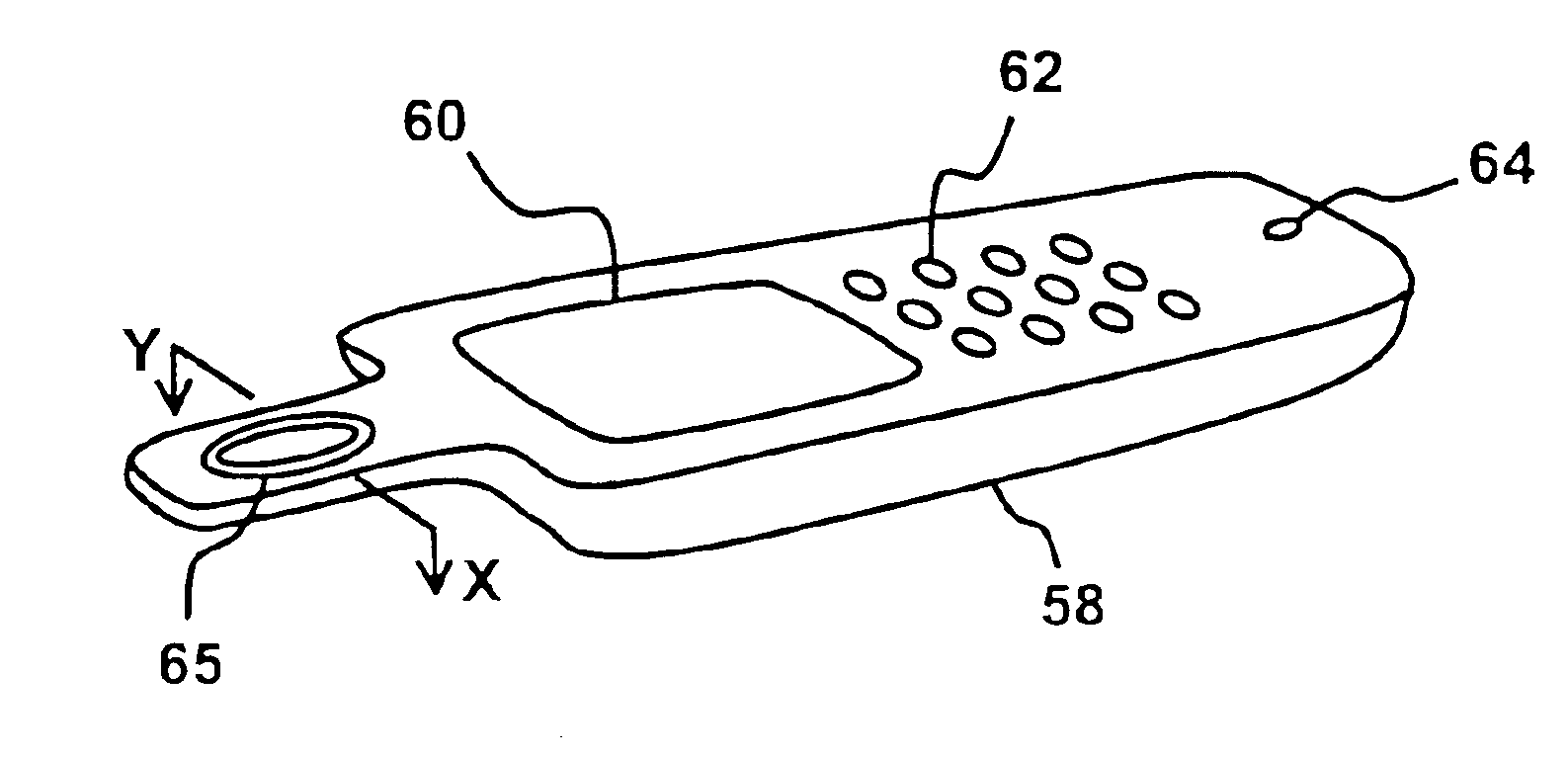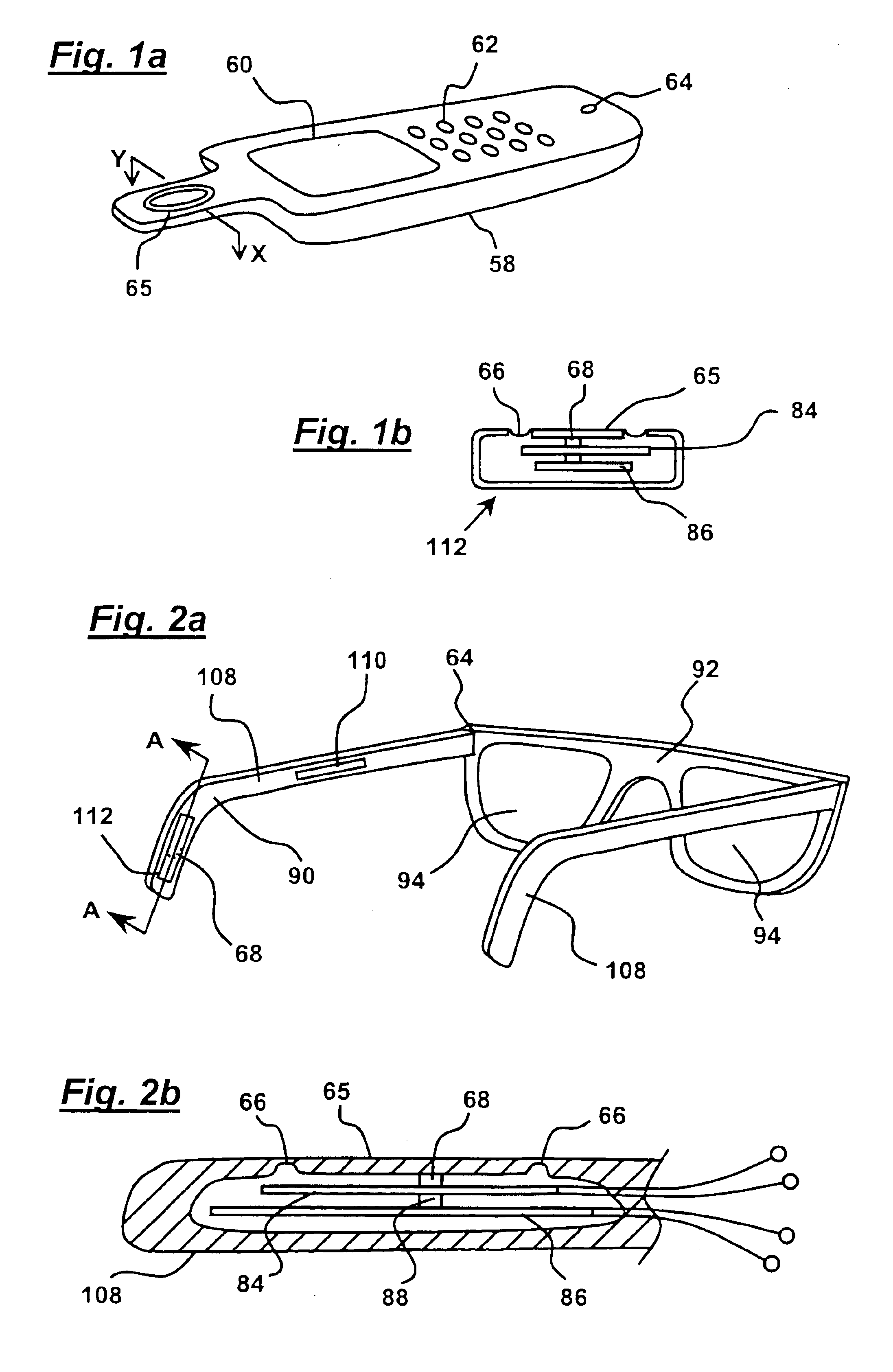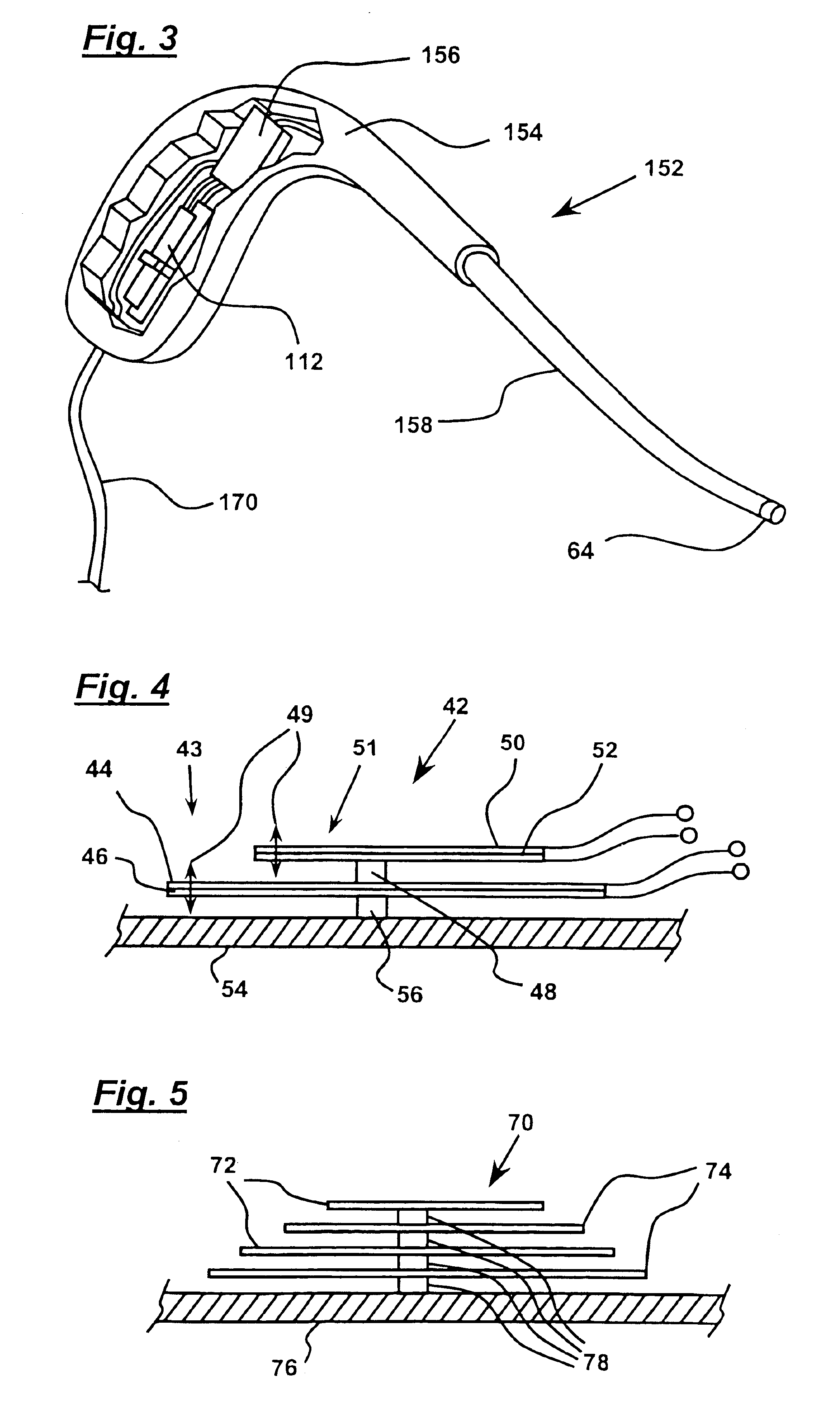Communication device using bone conduction
a communication device and bone technology, applied in the field of communication devices, can solve the problems of loss of available efficiency, difficulty in matching to an acoustic radiator, especially to the air, etc., and achieve the effects of low cost, low weight and high conversion efficiency
- Summary
- Abstract
- Description
- Claims
- Application Information
AI Technical Summary
Benefits of technology
Problems solved by technology
Method used
Image
Examples
Embodiment Construction
[0048]FIGS. 1A and 1B show a mobile handset (58), e.g. for use as a mobile or cellular phone, which comprises a microphone (64), buttons (62) forming a keypad, and a screen (60). The microphone is mounted in one end of the handset and the opposed end of the handset (58) is formed with an extension. An intendedly modal transducer or distributed mode transducer as hereinbefore described and as described in WO01 / 54450 and corresponding U.S. application Ser. No. 09 / 768,002, is mounted in the extension so as to drive a conduction interface (65).
[0049]As shown more clearly in FIG. 1B, the distributed mode transducer comprises upper and lower bimorph beams (84) and (86), the upper beam (84) being connected to the conduction interface (65) via a short stub (68) which extends across the width of the beams. The stub may be 1-2 mm wide and high and may be made from hard plastics and / or metal with suitable insulating layers to prevent electrical short circuits.
[0050]The beams are of unequal len...
PUM
 Login to View More
Login to View More Abstract
Description
Claims
Application Information
 Login to View More
Login to View More - R&D
- Intellectual Property
- Life Sciences
- Materials
- Tech Scout
- Unparalleled Data Quality
- Higher Quality Content
- 60% Fewer Hallucinations
Browse by: Latest US Patents, China's latest patents, Technical Efficacy Thesaurus, Application Domain, Technology Topic, Popular Technical Reports.
© 2025 PatSnap. All rights reserved.Legal|Privacy policy|Modern Slavery Act Transparency Statement|Sitemap|About US| Contact US: help@patsnap.com



